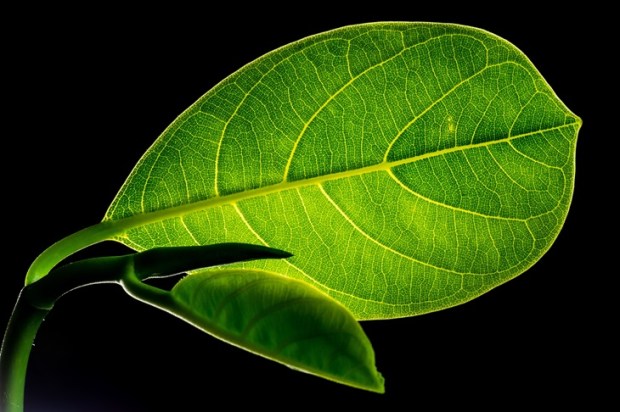As we approach Spring, there is a heightened chance that wildfires might develop across Australia. The perennial question as to whether the traditional firefighting methods, such as back burning and ‘cool fire’ hazard reduction, are effective and sufficient to prevent conflagrations, will soon resurface in the press.
Curiously, the Royal Commission into National Natural Disaster Arrangements established after the disastrous 2019-20 Summer bushfires did not directly address this question. The Government’s response, delivered on December 14, 2023, to the fifteen recommendations, directed solely to the Government, failed to consider the use of preventative forestry management practices. Instead, the Government’s responses all dealt with administrative matters.
The failure of the Government’s response to discuss alternative management practices is regrettable because the merits of mechanical methods (as opposed to back burning and ‘cool fire’ hazard reduction) to prevent wildfires should be considered seriously. This is because the usual practice of back burning releases carbon dioxide (CO2) in the air – precisely the practice which the Net Zero enthusiasts seek to avoid. In contrast, the use of mechanical devices could minimise the burning off and, thereby, facilitate the retention of carbon into the ground. With higher ground carbon content, plants need less water which, in Australia’s harsh summer climate, is an important ecological benefit. Hence, the claim that, ideally, mechanical devices (together with traditional methods), should be used to prevent firestorms taming fires before they become wild, is credible.
Wildfires are part of Australian history. Yearly, wildfires kill hundreds of people, thousands lose their property and possessions, unmeasurable numbers of native wildlife are wiped out, large areas of ecosystems destroyed, and millions of tonnes of toxic particulate matter and air pollutants released into the air. For example, Victoria’s Black Friday conflagration in January 1939 claimed 71 lives and devastated two million hectares of land with huge wildlife loss, and ash falling as far away as New Zealand. In January 2003, the Canberra firestorm caused the death of four people and injured 435. The fire destroyed 487 homes and 23 government and commercial buildings, including the Mount Stromlo Observatory. Wildlife and ecosystems lost were inestimable, and the estimated financial cost was up to $1 billion. At the time of writing, dangerous fires are raging in New South Wales, Victoria, and South Australia, with uncontrolled burning of vegetation, forests, grasslands, and croplands. Air pollution, generated by all open fires causes debilitating respiratory illnesses.
Efforts to prevent and control wildfires depend on the intensity of the heat, the weather conditions, and the type of vegetation. Typically, these efforts include improved land management practices and controlled burning of undergrowth. Veronika Samborska and Hanna Ritchie recently noted that these efforts are reasonably successful because ‘globally, the amount of area burned by wildfires each year has gone down over the last few decades’. Nevertheless, the management and prevention of wildfires remains an annual and challenging task of firefighters.
Controlled burning of the undergrowth to reduce ground fuel has long been used as a preventative method to minimise the occurrence of wildfires. Early European settlers in Australia noted large areas where soil fertility was low, the reason being that the Aboriginals regularly burned dry grass and undergrowth to clear the area around the camps and promote green nutritious plant shoots to appear, for hungry animals to congregate upon. There, they could be speared more easily for food, and as a bonus, wildlife killed or injured in the fires were the original takeaways. This was not so much a matter of land management, but survival in an unforgiving climate beyond their control.
The use of burning to reduce hazardous fuel biomass, along with weed and grass growth, is not only destructive of native wildlife, adding to progressive extinction, it also reduces the potential for soil carbon storage, resulting in reduction of crop fertility. Importantly, it also removes ground cover necessary to reduce wind and water erosion, and wildfires are at the mercy of the wind, difficult to control.
As a farming tool, the iconic Australian stump-jump disc plough was a great leap forward in agronomic practice, but to prevent the discs from clogging, the stubble had to be burned. This resulted in depletion of the soil, loss of ground cover, and erosion of such magnitude that in the Mallee country in Northwest Victoria, sandy soil stripped of nutrients was piled up against fences to cover them, requiring new fences to be built on top of the original, up to three times.
A blade-plough device revolutionised broad-acre farming in the 1970s. Colin Uebergang, a broad-acre farmer from New South Wales, who developed the plough, also researched and imported tractors powerful enough to draw the subsurface blade through the topsoil to control weeds, tilling the soil in preparation for planting and eliminating the need to burn the stubble. It also eliminated the need for herbicides and weedicides. The Uebergang plough is an outstanding means of protecting croplands and keeping carbon-rich nutrients in the ground, but other mechanical devices such as mulchers to break down the undergrowth for rapid decomposition must become an essential part of a successful firefighting strategy in both field and forest. Uebergang’s blade plough system has been used across Australia. Farmers from the Mallee to Moree and in Western Australia still revere him for saving their precious topsoil. Regrettably, synthesised chemical methods of weed control have since been adopted widely. The carcinogenic side effects of these chemicals on human and animal life are still being discovered.
By eliminating crop-straw-burning and adopting a rotational use of nitrogen-producing crops every third year, Uebergang was able to raise crop yields to near double the district average. The authenticated results of such were recorded in his book Farm Wars: The Epic Lifetime Battle of An Australian Farmer, along with a history of his pioneering of the synthesised-chemical free system in agriculture. One astonishingly revealed discovery was that soil with a history of crop residue retention and soil incorporation, had the additional ability of holding 2.5 times its own weight in absorbed rainfall. This alone was a major drought-mitigating attribute of non-fire used agriculture.
Now 92, Uebergang, in the 1970s, served as a rural bushfire captain and from that time became a dedicated conservationist who has been a prime mover in converting 20 million hectares of grain production to a non-burnt-crop-residue system in Australia.
The benefits of using mechanical methods of managing biomass, rather than burning-off in broad-acre grain farming, have also been demonstrated in the cane fields of Queensland where, prior to harvesting, the fields were traditionally burnt to remove undergrowth, unwanted foliage, and flush out the odd Taipan before the canecutters moved in. The ‘Burdekin snow’, flakes of carbon soot, was a harvest-time unwelcome visitor to the clotheslines of the locals, not to mention the smoke and effects on the eyes and lungs of the locals, and the working conditions of the canecutters. Much of this soot landed in the sea, and the soils were depleted of these carbon nutrients. In the early 1970s, green-cutting harvesting machines were introduced, with the rubbish shredded and dropped as ground cover to replenish carbon-rich nourishment, minimise wind and rain erosion, and improve the quality of runoff water impact on the Great Barrier Reef.
But Australia’s most devastating wildfires have occurred in the forests. Forestry is a waiting game. Investment in this essential industry is impeded because of the time it takes to grow the trees from planting to harvesting, when the lumber’s quality and quantity is measured, and sold, thirty or so years later. A forest fire can destroy the entire investment overnight.
However, early this century, Uebergang also invented an automatic mechanical tree-pruning machine to efficiently remove the flammable moribund lower branches. In mechanically managing forests and taming the wildfires, the Uebergang tree-pruner offers a better way of minimising forest wildfires than seasonal ‘cool’ burning. Progressively pruning the moribund lower branches of a tree as it grows removes the flammable conduit for ground fires to rapidly spread into the canopy from where flares leap ahead and become uncontrollable. Progressive pruning to contain the knotty core to about 100 mm diameter has the added advantage of improving the quality and value of the straight-grain, knot-free timber that grows around it.
But, until recently, trees could only be pruned by hand. It takes a man one day to manually prune the lower storey of 100 trees using chain saws and pole saws. But Uebergang’s invention is an automatic mechanical pruner that can prune (and, importantly, reliably audit both quality and quantity) 2,000 trees in one 8-hour shift, and if necessary, work three shifts each day. A full-scale pruning head has been manufactured and successfully tested to prune, with mechanical precision, plantation trees, to revolutionise high-quality straight-grain, knot-free timber production and turn Australia from a net importer of timber and timber products to a net exporter. Pruning the lower storey helps mitigate forest fires by separating ground fires from the upper storey of the trees to prevent the spreading of fast-moving canopy flares and by improving access for fire-fighters and their equipment.
Mechanical methods to minimise the spread of fires thus offer the prospect of effectively controlling biomass and even preventing disastrous firestorms, thereby minimising the damage that otherwise would undoubtedly occur. Insurance companies should welcome such a risk-reduction initiative.
In the coming months – Australia’s fire season – it would be prudent to consider the contributions made by Colin Uebergang to the firefighting industry of Australia. The advantages offered by his mechanical inventions surely are beyond any doubt. These inventions could minimise the burning off practice and ensure the retention of carbon into the ground to aid the growing of plants.

























